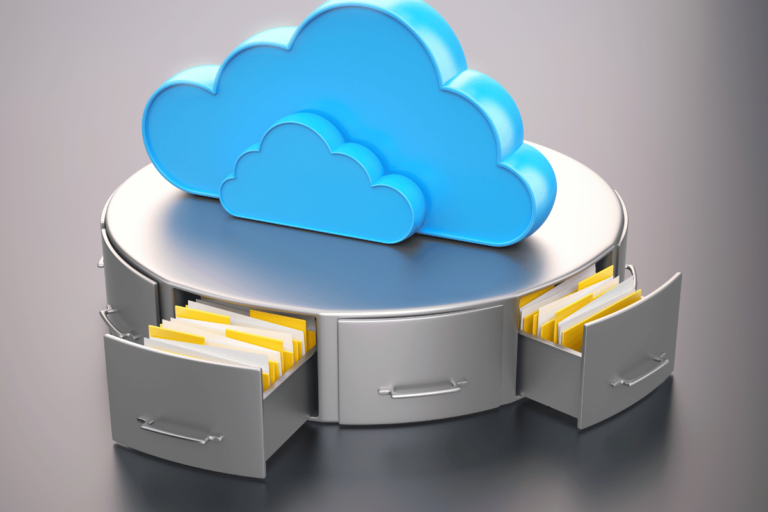Best Digital Asset Management Tools for Marketers
The digital asset management market is growing fast and could hit over $8.1 billion by 2026. It’s changing how marketers handle and use their digital files. Not just big companies, even small ones are using this technology. They find it helpful for keeping their brand consistent, managing rights, and making marketing smoother. There are many digital asset tools today that make staying organized and finding files easy. Let’s look at the best systems that are helping marketing teams everywhere.
Key Takeaways
- The DAM market is anticipated to grow to over $8.1 billion by 2026, indicating a substantial increase in demand.
- Brandfolder, Adobe, and MediaValet are among the highest-rated DAM tools, making them some of the best DAM software for marketing teams.
- Cloudinary, Bynder, and PhotoShelter offer diverse pricing plans to fit different business needs.
- Key features for DAM tools include powerful search functionalities, integration capabilities, and automation powered by AI.
- Choosing the right DAM solution requires assessing your team’s specific needs and goals, ensuring scalability and ease of use.
What is Digital Asset Management?
Digital Asset Management (DAM) helps organizations handle a lot of digital media. It uses metadata to make finding assets easier. It also controls who can edit and use the assets to avoid issues like duplication. With asset management software for schools, educational institutions can effectively manage and organize their digital assets, ensuring that all resources are easily accessible and securely stored.
It’s key for keeping a brand’s look consistent. Marketers use them to keep all the brand materials in one spot.
Definition and Importance
Digital asset management is about organizing and storing digital content. This includes images, videos, and documents. The goal is to have a central place to manage all these different file types.
Customer needs change a lot, and meeting those needs is important. Businesses use DAM to keep their marketing content effective and up-to-date. They often use AI to make managing assets easier.
DAM providers work with big tech companies for better security. This means your content stays safe and performance remains top-notch.
Key Benefits for Marketers
Marketers see a lot of benefits from using DAM:
- Improved Efficiency: It makes dealing with content across many channels easier.
- Increased Productivity: Finding assets is quicker, saving a lot of time.
- Better Collaboration: AI-powered workflow tools improve teamwork on projects.
- Enhanced Security: They make sure only the right people see sensitive content.
- Brand Consistency: All marketing materials look and feel the same.
- Analytics Insights: You get data that helps plan and measure your content’s success.
Using DAM can save you a lot of money. Motorola, for example, saved $600,000 using DAM. For video marketers, 83% found that videos help with lead generation.
Tools like Adobe Experience Manager and Brandfolder are crucial for managing large amounts of digital content.
Key Features to Look for in a DAM Tool
Today, choosing a good digital asset management (DAM) tool is more important than ever. Marketers need a tool that not only organizes assets well but also promotes teamwork. It should work smoothly with other tools too. Here’s what to look for in *top DAM tools*.
Asset Organization and Metadata Management
Being able to quickly find your assets is key. A solid *asset management software* will offer detailed metadata handling, powerful search options, and auto sorting features. This means your files will be tagged well, making searches a breeze. This is a big help, as over half of office workers say finding files is a headache.
- Smart search and discovery features
- Automated asset categorization
- Version control to manage asset history
- Duplicate detection to avoid multiple identical assets
Collaboration and Workflow Automation
DAM tools with online collaboration can boost business productivity significantly. They should have options for easy file sharing, commenting, and automated review processes. Such tools can greatly improve how teams work together. They also help keep your marketing materials consistent across all channels.
- Review and approval workflows
- Annotation features for real-time feedback
- Secure guest uploading for third parties
- Automation of repetitive tasks
Integration Capabilities
For a solid marketing operation, your DAM must integrate well with other software. Easy connections with tools like Adobe and HubSpot are key. This makes work flow better and offers a consistent experience no matter where your users are. Don’t forget, mobile access is a must-have today, as most web users are on mobile devices.
- Compatibility with Adobe Creative Suite
- Integration with CRM tools like HubSpot
- Mobile-friendly interfaces
- Embedding and sharing capabilities
Ensure the *top DAM tools* you’re looking at offer these features. They are crucial for getting the most out of your digital asset management software. With the right tools, you can really boost your marketing efforts.
Top DAM Tools Currently Available
The digital asset management market is growing fast, set to reach over $8.1 billion by 2026. This growth is boosted by many software providers. They offer great digital asset management tools for marketers.
| Platform | Key Features | Notable Clients |
|---|---|---|
| Acquia DAM | Searching, sharing, collaboration tools, workflow automation | Crayola, Dyson, LG |
| Adobe Experience Manager Assets | Integration with Adobe tools, high-volume asset management, generative AI editing | N/A |
| Aprimo | Automated content delivery, third-party system integration | N/A |
| Brandfolder by Smartsheet | Enterprise-grade security, collaboration, governance controls | N/A |
| Bynder | Scalable storage, advanced AI capabilities, AWS global services | Five Guys |
| Canto | Smart sharing, role-based user permissions, reporting capabilities | Domino’s, Rolex |
| CELUM | GDPR compliance, custom workflows, automation | N/A |
| Cloudinary | Asset management and delivery, support for creative and development industries | N/A |
Bynder is a top pick in Forrester’s Wave Report. Big names like Domino’s and Rolex use Canto for its dashboard and sharing features. Acquia DAM gets trust from companies like Crayola, Dyson, and LG thanks to its strong search and collaboration tools.
Adobe Experience Manager Assets works well with other Adobe tools. Brandfolder by Smartsheet stands out for its high-level security and governance.
When marketers choose a digital asset management tool, they consider unique features and how well they integrate. If you want AI features, workflow automation, or the ability to grow as you do, many DAM options fit the bill.
Case Study: Successful Implementation of DAM
Real-life success stories in DAM can show us how these systems change a business for the better.
Company Overview
The Sacramento Kings, a pro basketball team, had lots of trouble with their photos, videos, and files. Bates College and the University of Miami also faced big challenges. They all had too many images and media to handle easily.
Challenges Addressed by DAM
These organizations couldn’t find files, wasted time searching, and used old content. A DAM system helped the Sacramento Kings use their photos better. This made their brand more consistent and helped target the right fans for more sales.
Results and ROI
The Sacramento Kings got 80-85% of their old photos working for them. Bates College made sharing photos easy and fun again. The University of Miami handled 500,000 images from 30 years in their DAM system.
These case studies showed improved ROI for DAM, cutting costs and making operations smoother. They highlight how powerful a good DAM system can be.
| Company | Challenges Faced | Post-DAM Implementation Benefits |
|---|---|---|
| Sacramento Kings | Unorganized photos, inefficiencies | 80-85% photo usage improved |
| Bates College | Complex photo-sharing workflow | Simplified sharing, improved engagement |
| University of Miami | Vast media files management | Efficient management of 500,000 images |
How DAM Enhances Collaboration in Marketing Teams
Today, Digital Asset Management (DAM) tools are key for team work in fast-paced marketing. Nearly two-thirds of marketers find it hard to coordinate between brands and departments. DAM systems offer a single place for better teamwork and quicker content checks.
Streamlining Content Approval Processes
DAM systems help speed up campaign launches by making content checks easier. They keep all files in one place and grant different access levels to team members. This makes sure content review is fast and done right. Adding tags and keeping track of versions makes checking easier and keeps content relevant.
Around 50% of content made for marketing doesn’t get used. A strong DAM keeps track of content to avoid waste and improve how things are done. This makes a team more efficient overall.
Facilitate Remote Work and Global Collaboration
With more working from home and teams spread worldwide, the need for global DAM solutions is clear. DAM tools offer sharing that’s easy and secure, no matter where you are. For example, Nike uses DAM for a consistent brand look worldwide. Unilever and Marriott International also use DAM to better work together across different locations.
Teams can work on files together and make decisions quickly with DAM. It helps recycle and review content fast for new campaigns and platforms. This keeps the team ready to adapt to changes in the market.
| Company | Benefit of Using DAM |
|---|---|
| Nike | Ensures brand consistency globally through efficient collaboration. |
| Unilever | Streamlines asset organization and collaboration across departments. |
| Nestlé | Centralizes marketing assets for improved accessibility worldwide. |
| Marriott International | Manages marketing assets to maintain brand consistency and streamline distribution. |
(Duplicate Heading – Content for this section to be merged with Section 1)
Today, more companies focus on creating digital media over physical goods. This change makes Digital Asset Management (DAM) crucial. Without an organized DAM system, handling digital assets becomes hard. Therefore, finding the right software for your company is key.
Getting rid of old or duplicate digital files helps keep your storage neat. Also, naming files correctly improves how fast you can find them. Using these simple techniques makes your digital workspace clean and efficient.
A good DAM system, like Adobe Experience Manager, can boost teamwork and brand control. This software can handle various digital assets, offering several ways to upload them. This caters to different needs within a team.
The interface allows you to drag and drop files and track the upload progress. You should know that really long file names get shortened for better compatibility. If you have a lot of files to move, a bulk upload tool can help. Using this tool during off-peak hours can make the process smoother.
For big data migrations, admins can use tools like Bulk Import from Azure or S3. This process needs special configurations and access settings for successful uploads. It’s a key role in managing a large number of digital assets smoothly.
In fields like Architecture, Engineering, and Construction (AEC), a rich digital asset library is vital for business. DAM systems make it easy to find and use files. They also keep the brand’s look consistent and aid team communication by offering a shared asset space.
DAM solutions not only save on storage but also increase security. They provide insights through analytics, help with compliance, and protect digital assets. This makes managing digital content far more efficient and secure.
As companies grow, the need for a Digital Asset Manager becomes clear. These experts ensure that digital files are well-organized and meet industry standards. They carry out a range of daily tasks to keep digital assets in good order.
By concentrating on organizing digital assets, Digital Asset Managers help save money and boost productivity. They ensure assets are compliant and secure, making workflow smoother. They keep brand assets consistent and up-to-date with digital trends.
Comparing Free vs. Enterprise-Level DAM Solutions
Choosing the right digital asset management (DAM) tool is key in today’s fast-paced digital world. It helps you control your assets better and work more efficiently. Your choice between free DAM tools or enterprise-level software can greatly impact your workflow.
Features of Free DAM Tools
For smaller groups or those with fewer digital assets, free DAM tools can be a great start. They do a good job of organizing and tagging assets. You’ll also find they are easy to search through.
But, these tools lack some advanced features. You won’t get automated workflows or very detailed access controls. This could be a problem for larger or fast-growing businesses who need more.
Capabilities of Enterprise-Level Solutions
Enterprise DAM solutions meet big organizations’ needs with detailed features. While these tools are more expensive, they provide great benefits, like top-notch search capabilities. They are often powered by AI.
Enterprise tools also offer strong support and features for managing your assets. Their API integrations with tools such as Hootsuite and Shopify are advanced. And they provide precise control over who can access what, plus smooth sharing processes.
Take Dash, for example. It’s more budget-friendly than most enterprise options. Dash is known for being user-friendly and quick to start using. It’s a top choice for small companies wanting to see high return on investment.
On the other hand, Bynder and Adobe Experience Manager Assets are powerful enterprise options. They excel in scalability and have advanced search features, but can be complex at first. Yet, they help a lot with AI-supported asset management and integrations. This makes finding and using assets easier, which supports their value.
How to Choose the Right DAM Tool for Your Business
Choosing the best DAM software for your company starts with knowing what you need and want. You must understand what your business requires and how it will help you in the long run. We’ll show you key steps to find the perfect DAM platform for your company.
Identifying Your Needs and Goals
First, figure out what your business needs. Understand your digital assets, workflows, and essential characteristics. A content audit helps you see what assets you have. And checking system requirements looks at what features you must have, like security and the ability to grow.
Decide if you need a cloud-based, hybrid, or on-premises DAM. This choice rests on scalability, available IT resources, and your budget. Cloud solutions offer easy access and are good for working from anywhere.
DAM software with advanced search features is a big helper. It saves time and makes it easier to find and use assets.
Must-Have Features for Your Team
It’s crucial to know which features are essential for your DAM tool. Here are some features you should look for:
- Versatile File Format Compatibility: Look for software that works with many file types. This makes managing assets easier and helps with collaboration.
- User Permissions and Access Controls: These keep your data safe by controlling who can see and change it.
- Metadata Management: Good metadata management helps you better organize and find your digital assets. It also provides insights for your content strategy.
- Integration Capabilities: The ability to work with other tools smoothly saves time and makes your processes run better.
- Analytics and Reporting: These features let you track and improve your content strategy with data.
- Mobile-Friendly Access: A mobile-friendly DAM allows you to manage and share your assets from anywhere. This is key for on-the-go work.
To pick the right DAM software, focus on your essential features. This way, your DAM system will meet your needs now and in the future. It will work well with your company’s growth and strategies.
Future Trends in Digital Asset Management
Digital Asset Management (DAM) is changing fast. This change comes from new technology and business needs. The trends show big moves toward making things more automatic and easier to connect, changing how we work with digital assets.
AI and Automation
AI is changing how we manage digital assets in big ways. For example, Pimcore uses AI from Google TensorFlow to tag images automatically. This makes work more efficient. It also helps teams work together better.
Thanks to AI, businesses can get better insights from their digital assets. This means they can make smarter decisions. With automated flows, errors drop, and things move faster, helping bring products to market quicker.
Improved Integration and Flexibility
Better integration makes DAM systems work with other tools more smoothly. This means it’s easier to work across different software. As a result, workflows get better, and customers have a smoother experience.
Modern DAM platforms like Pimcore focus on managing assets from one place, adding custom details, and staying secure. These tools help every team in a business keep their look consistent. They also support effective marketing on many channels.
DAM tools are now used by many departments in various industries. They help in marketing, sales, HR, and more. Pimcore, trusted by over 110,000 businesses, leads in offering high-quality, flexible DAM solutions.
Conclusion
Digital asset management is key for today’s marketers. It helps keep all digital materials in one place. This makes it easier for teams to work together and speeds up getting things done.
Tools like Papirfly, Canto, and Bynder are making a big difference. They help markerters control, share, and use their content. This cuts down on delays and makes teams more productive.
The digital management field is rapidly growing. From 2020, it’s set to grow from a $2 billion market to over $8 billion by 2026. This massive growth is mainly due to the use of cloud-based solutions.
This growth shows the importance of digital asset management. It’s critical for keeping a strong brand presence and improving digital strategies. Many options are available, from powerful DemoUp Cliplister to versatile IntelligenceBank and Widen Collective.
Marketers are dealing with more digital content than ever. Choosing the right DAM tool is vital. It means better managing your assets and improving how you reach customers with engaging content.
Data security is also becoming more important. A strong DAM solution can help protect your data. It ensures your marketing efforts are safe and successful.
FAQ
What is Digital Asset Management and why is it important?
What are some key benefits of using DAM for marketers?
What features should marketers look for in a DAM tool?
Can you name some top digital asset management tools available today?
How does a DAM tool enhance collaboration within marketing teams?
What are the differences between free and enterprise-level DAM solutions?
How can businesses choose the right DAM tool?
What future trends should marketers expect in Digital Asset Management?
Source Links
- Top 9 Digital Asset Management Tools in the Market
- The 8 best digital asset management tools | OMR Reviews
- The 10 best digital asset management software in 2024
- What is digital asset management and how can it help you? | MarTech
- Digital Asset Management: What Is It & What’s the Best Software?
- Digital asset management (DAM) — what it is, how it works, and best solutions
- 10 Important Features To Look For in a DAM Platform
- 13 Features To Look For in Digital Asset Management Software
- 12 digital asset management features to make your life easier
- A Look at 19 Enterprise Digital Asset Management Solutions
- The best digital asset management software for 2024
- Airtable
- Top Digital Asset Management Business Use Cases
- 19+ DAM Case Studies Your Marketing Team Needs to See | PhotoShelter
- How To Build a Digital Asset Management Business Case
- Enhancing marketing efficiency through digital asset management
- Digital asset management for marketing
- Benefits Of Digital Asset Management For Marketing | Scaleflex Blog
- Digital Asset Management Strategies for Small Businesses
- Add your digital assets to Adobe Experience Manager. | Adobe Experience Manager
- What Is a Digital Asset Manager and Why Do You Need One?
- Why you don’t need an enterprise DAM
- How to choose the best digital asset management software for your marketing team
- How to choose the right digital asset management software: A step by step guide
- Choosing a Digital Asset Management System | Smartsheet
- How to Choose the Right Digital Asset Management System?
- Digital Asset Management (DAM) Mega Trends
- Digital Asset Management Benefits & Future Trends
- What the future holds for digital asset management in 2022
- 30+ Best Digital Asset Management Software
- What is Digital Asset Management? Trends, Benefits, Use Cases
- Best Digital Asset Management Software (DAM) – What is it? – Catsy





